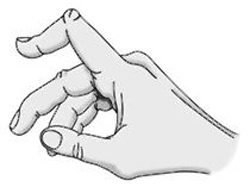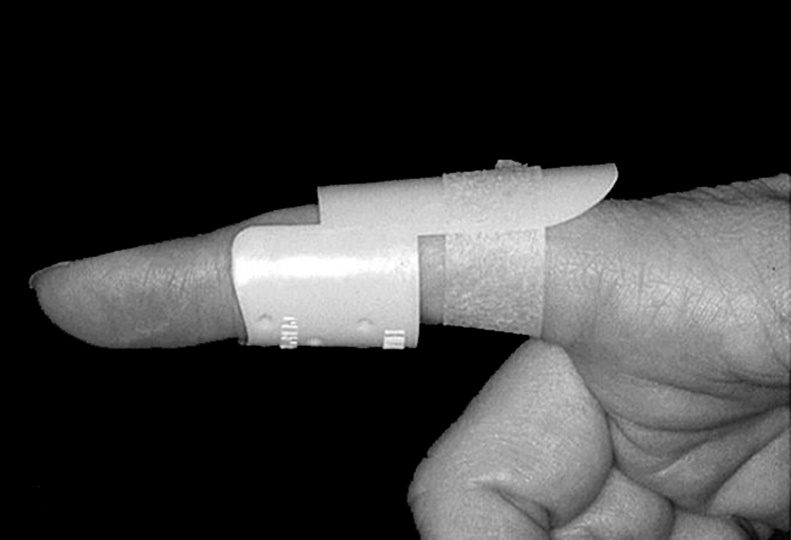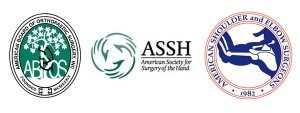A Patient’s Guide to Boutonnière Deformity
Introduction
Boutonnière deformity (buttonhole is the French derivation) is the result of an injury to the tendons that straightens the middle joint of your finger. The result is that the middle joint of the injured finger will not straighten, while the fingertip bends back. Unless this injury is treated promptly, the deformity may progress, resulting in permanent deformity and impaired functioning.

The characteristic shape of Boutonnière deformity. The middle joint of the affected finger will not straighten, while the tip of the finger bends back (hyperextends)
Anatomy
There are several tendons in your fingers that work together to bend and straighten the finger. These tendons run along the side and top of the finger. The tendon on the top of the finger attaches to the middle bone of the finger (the central slip of tendon). When this tendon is injured, the finger is not able to be fully straightened.
Cause
Boutonnière deformity is generally caused by a forceful blow to the top (dorsal) side of a bent (flexed) middle joint of a finger.
It also can be caused by a cut on the top of the finger, which can sever the central slip (tendon) from its attachment to the bone. The tear looks like a buttonhole (“boutonnière” in French). In some cases, the bone can pop through the opening.
Boutonnière deformities may also be caused by inflammatory arthritis (e.g., rheumatoid)
Symptoms
Signs of boutonnière deformity can develop immediately following an injury to the finger or may develop a week to 3 weeks later.
- The finger at the middle joint cannot be straightened and the fingertip cannot be bent.
- Swelling and pain occur and continue the top of the middle joint of the finger.
Doctor Examination
Because a boutonnière deformity is only one of several injuries that result from a “jammed finger,” you should consult a doctor for an appropriate diagnosis and treatment.
Your doctor will examine the fingers and hand. He or she will ask you to straighten the affected finger and bend the fingertip. X-rays may be recommended to detect any broken bones attached to the central slip of tendon.
Treatment
Boutonnière deformity must be treated early to help you improve outcomes in the finger.
Nonsurgical Treatment
Most mallet finger injuries are treated with splinting. A splint holds the fingertip straight (in extension) until it heals.
Nonsurgical treatment is usually preferred, and may include:
- Splints: A splint will be applied to the finger at the middle joint to straighten it. This keeps the ends of the tendon from separating as it heals. It also allows the end joint of the finger to bend. It is important to wear the splint continuously for the recommended length of time — usually 6 weeks for a young patient and 3 weeks for an elderly patient. Following this period of immobilization, you may still have to wear the splint at night.

A commercial splint used in treating boutonnière deformity. Splinting helps keep the ends of the tendon from separating during healing.
- Exercises: Your physician may recommend stretching exercises to improve the strength and flexibility in the fingers.
- Protection: If you participate in sports, you may have to wear protective splinting or taping for several weeks after the splint is removed.
People with boutonnière deformity caused by arthritis may be treated with oral medications or corticosteroid injections, as well as splinting.
Surgical Options
While nonsurgical treatment of boutonnière deformity is preferred, surgery is an option in certain cases, such as when:
- The deformity results from rheumatoid arthritis.
- The tendon is severed.
- A large bone fragment is displaced from its normal position.
- The condition does not improve with splinting.
Surgery can reduce pain and improve functioning, but it may not be able to fully correct the condition and make the finger look normal. If the boutonniere deformity remains untreated for more than 3 weeks, it becomes much more difficult to treat and the surgery much more complicated


